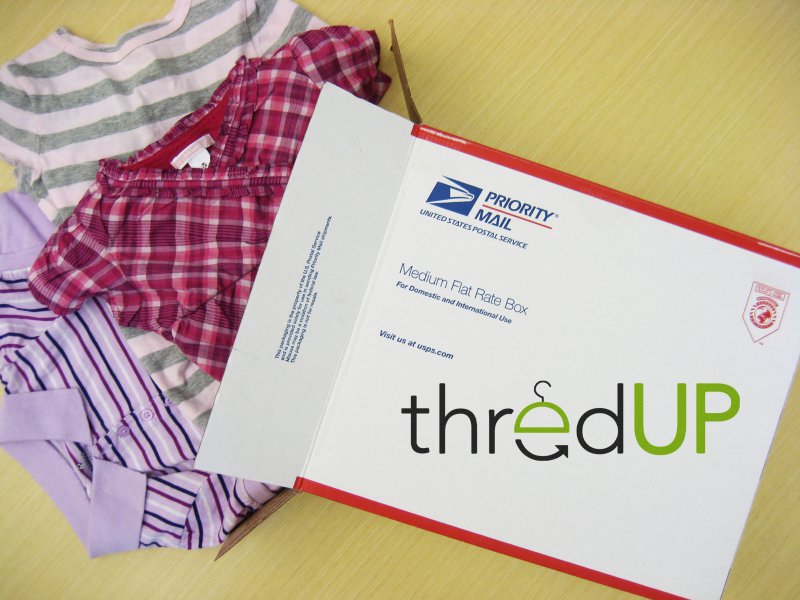The clothes-swapping site thredUP celebrates its one-year anniversary this month. Since its founding, thredUP has become the top place online to trade used kids' clothing. Co-founder and CEO James Reinhart told Shareable's Neal Gorenflo how they did it, and what's next:
Neal Gorenflo: Shareable was one of the first sites to cover thredUP's launch last September. Since then, you've pivoted from a general clothes sharing site into children's clothing. What led you to make that change in direction?
James Reinhart: We soon realized that while swapping men’s and women’s clothes can be fun, swapping kids' clothes actually solves a universal problem: Clothes don’t grow and kids do – and they grow fast! Every 3-6 months kids outgrow an entire wardrobe, which means keeping children clothed is time-consuming and expensive. By a child’s 17th birthday, the average parents have retired some 1,300 items and spent $20,000 on clothing. While chatting with hundreds of moms, we learned that the second-hand kids clothing market was inefficient – there was really no great way to help parents easily swap out the old for the new. Sites like eBay require itemization and bidding, consignment shopping requires digging through racks for one or two hidden gems and using craigslist often results in poor quality. We knew there had to be a better way…
NG: How does the new service work?
JR: thredUP helps busy parents exchange boxes of outgrown kids clothing for great gear that fits without leaving the house. It’s easy:
1. Pick – Browse boxes of kids clothing by size, season and gender & pick one you’d like to receive. You pay only $5 and shipping;
2. List – Prepare a box of gently loved outgrown kids clothes (free USPS boxes are sent to you at registration) and list it;
3. Send – When your box is picked, send it on request. We even schedule the home pick-up & delivery!
JR: We let members pick their first box before doing anything else on thredUP. From that point forward, for every box you send, you are able to pick an additional box. It is a swap, so at the basic membership level, the pick/send ratio is one-to-one.
NG: What were your key principles in designing the new service?
We have built the service around three key principles: affordability, convenience, and eco-friendliness. thredUP is a great way to save both time and money on kids' clothing while also doing good by mother earth. We have already helped parents save over $500,000 and recycled over 50,000 lbs. of children’s clothes. Our swappers agree that thredUP is one of the most simple, seamless platforms around.
NG: One of the cool features you had on the old site was a widget that quantified the benefits of clothes sharing. What are the benefits to users in the new service?
JR: There are so many benefits to swapping on thredUP. The service solves problems parents face everyday:
-
Parents are busy – thredUP helps parents stop spending hours searching for children’s clothing one painfully tedious item at a time;
-
Hand-me-down networks are limited – thredUP swappers can extend the “neighborhood swap party” by trading with parents nationwide;
-
Homes get cluttered – swappers can free-up precious storage space by finding a home for outgrown clothing;
-
Kids are expensive – With thredUP, our users save thousands of dollars each year on kids' clothing;
- Overproduction – By sharing what we already have, thredUP can help families cut down on waste and consumption. Using our site makes it easier for families to "go green!"
NG: How much waste does thredUP have the potential to save overall? I'm curious about how much you may be able to reduce consumption. Being a new dad myself, it seems like there's tons of children's clothes out there!
JR: We are realistic about families’ use of thredUP. We simply encourage parents to add thredUP to their kids clothing diet, not stop buying new completely. With over 20 billion lbs. of clothing and textiles ending up in US landfills each year, thredUP is part of a much-needed solution. We estimate that thus far we’ve helped parents recycle 50,000 lbs. of kids' clothing.
NG: I noticed that you've added a "Leaderboard," which is a reputation system similar to eBay's. How important is it to service quality?
JR: The leaderboard is a fun way for swappers to see where they rank among the rest of the thredUP community. It’s also part of our quality-control strategy. We ask all members to abide by the “Golden Thred Rule” and send only what they’re willing to receive. To verify that people follow the rule (besides the honor system), when you receive a box, you can review the sender (similar to eBay). These ratings help members determine which senders have a good quality-history on thredUP. 90 percent of our members are three- or four-star members (out of four). It’s a number we’re very proud of. Additionally, if a member receives any boxes that do not meet our quality standards, we credit that member appropriately.
NG: Where are you seeing the fastest growth – geographically, demographically, and item wise?
JR: We’re seeing tremendous growth across the board – really! Since our April launch of thredUP (the kids' version), we have over 22,000 members and add proximately 150 new members each day. Texans are swapping with Californians, and members in South Dakota exchange with parents in Florida. Our reach is truly nationwide, which is what makes thredUP even more fun.
NG: What new features can user look forward to?
JR: We’re rolling out a whole new set of features every two weeks. Last week was opening the “notes” section to all members, putting boxes of reserve for our PRO members, and allowing users to “follow” their favorite senders. We’ll continue to roll out new quality and convenience features regularly. Additionally, we’re looking to expand to maternity clothing soon.
NG: Without giving away your strategy, what has been your smartest marketing move, and why do you think it worked?
JR: Building up our early adopters through various grass roots campaigns has been extremely successful for us. When we launched thredUP kids, we knew off the bat who would embrace the concept first – parents already online, bargain hunters, eco-conscious families. Through primarily blogger outreach in our early months, we were able to introduce thredUP to these communities and since then word of mouth has taken over. Our early adopters and fans have helped us spread the word about thredUP in a way that we could never have done with our tiny start-up budget. Our members have sent close to 18,000 invitations to thredUP.
NG: What have you learned about sharing since you launched?
JR: We are on the brink of a major shift in consumer spending: fugal is in, conspicuous consumption is out. The swapping market is picking up speed and we are thrilled to be at the forefront of this particular industry. More and more, people “get it.” Why not share what we already have to save money, while also cutting down on waste? With a simple, convenient swapping platform, collaborative consumption is a no-brainer.









